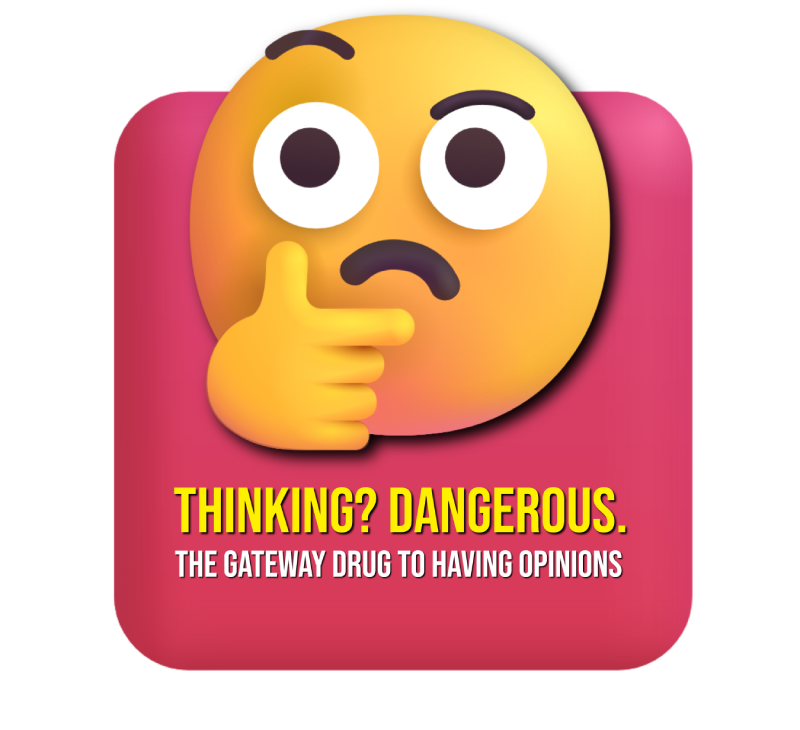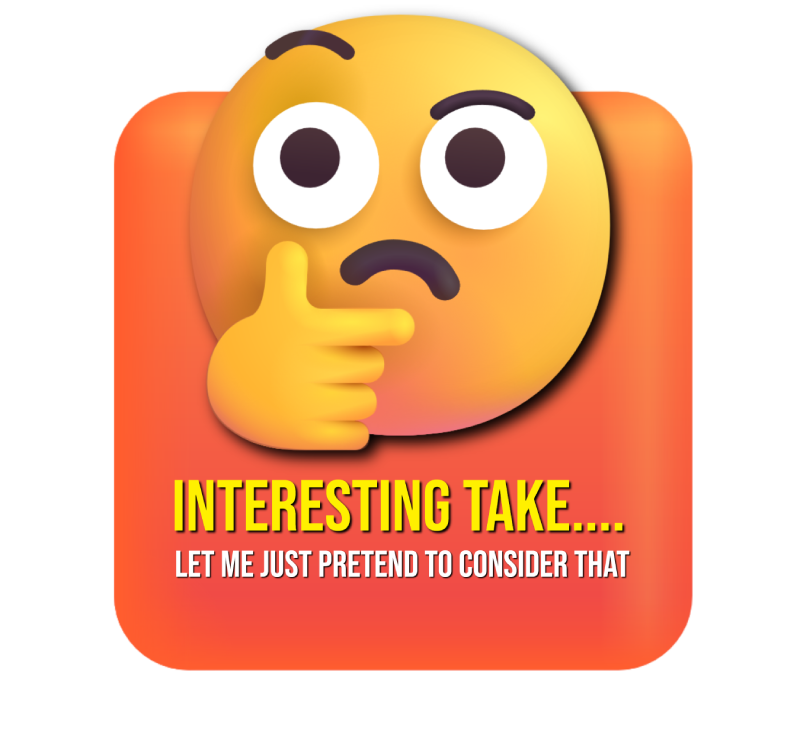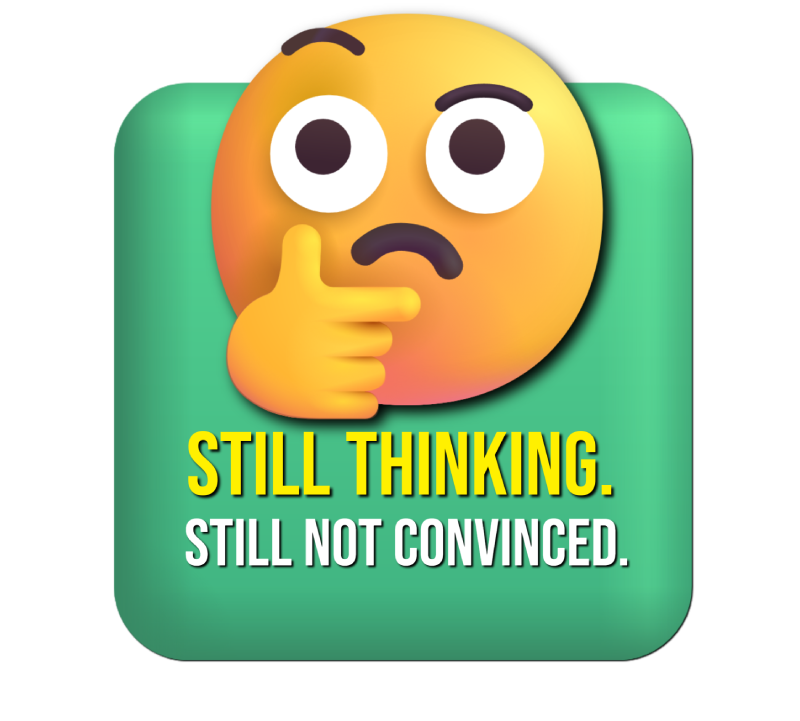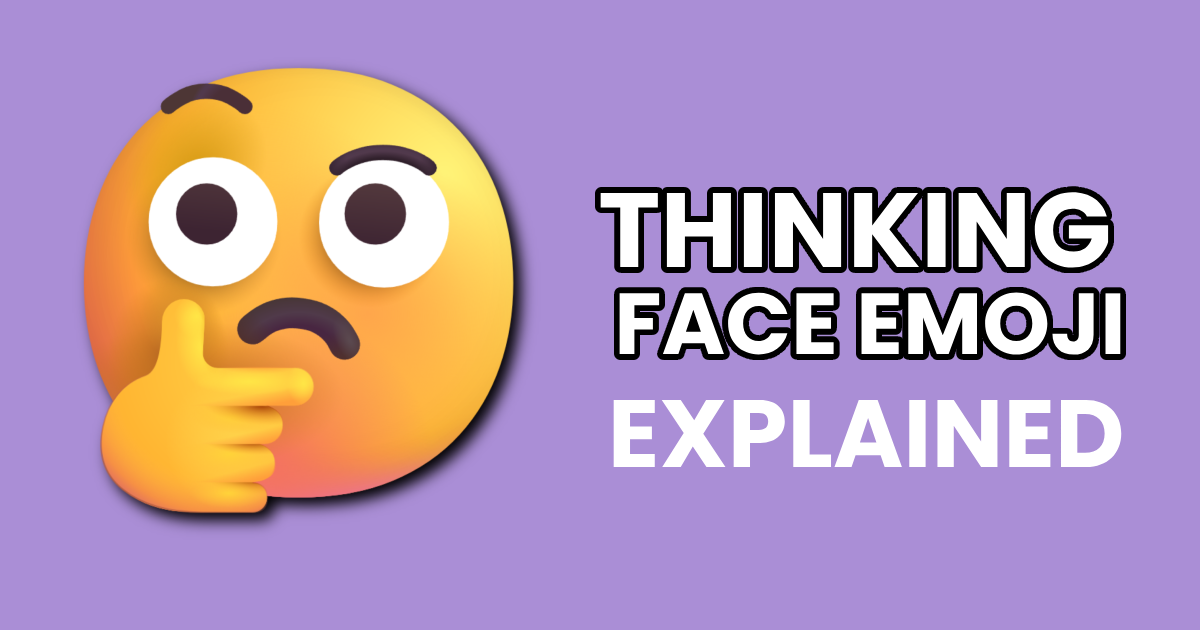What began as a symbol of thoughtful reflection has become a versatile instrument of digital side-eye. The thinking face emoji might look polite, but it’s usually the start of an argument — or the end of someone’s dignity. While it began life as a tool for expressing curiosity or wonder, online culture has twisted it into something altogether different. Now it’s about subtle judgment, ironic questions, and emoji-based warfare. If you’ve ever received it in a message, you probably paused and asked yourself what you really meant. And if you’ve ever used it, you knew exactly what you were doing.
What Is the Thinking Face Emoji, Really?
The thinking face emoji looks innocent enough: a yellow face with one eyebrow raised, eyes staring forward, and a hand resting thoughtfully on its chin. It suggests reflection, pondering, or genuine curiosity — on the surface, anyway. But online, surface meanings don’t last long. Most users now interpret this emoji as a stand-in for sarcasm, passive aggression, or digital shade. It’s not so much “I’m thinking about this” as it is “I’m thinking about how wrong you are.” It’s a classic example of how internet usage mutates meaning at speed.

The Origins of a Thoughtful Icon
First added in 2015 with the Unicode 8.0 update, the thinking face emoji quickly gained traction across platforms. Apple included it in iOS 9.1, and Android rolled it out not long after. Originally, it offered something useful — an emoji for curiosity, confusion, or thoughtful discussion. It filled a gap on the keyboard, sitting somewhere between neutral acceptance and raised-eyebrow suspicion. But as meme culture spread and sarcasm became the language of social media, the emoji’s meaning started to shift. By 2016, it had gone from innocent pondering to side-eyed disbelief.
Judgment Disguised as Curiosity
These days, the thinking face emoji rarely suggests actual thought. Instead, it’s a polite way to say, “You’re wrong, but I’m letting you figure that out yourself.” When used after a ridiculous statement or bold claim, it casts doubt without stating it outright. It’s a method of disagreement dressed up as curiosity. People use it to imply someone has said something questionable without starting a fight — though the implication is always there. Whether it’s questioning someone’s outfit choice, opinion, or life decisions, this emoji offers plausible deniability. It’s the emoji equivalent of raising one eyebrow and saying “hmm,” while secretly planning a snarky comeback.

A Gallery of Sarcasm: How the Thinking Face Emoji Is Actually Used
Depending on the context, the thinking face emoji can carry very different meanings. Used sincerely, it might reflect a moment of introspection — but let’s be honest, that’s rare. More often, it’s sarcastic, ironic, or passive-aggressive. It might appear at the end of a sentence like “Interesting take,” which really means “What nonsense is this?” In memes, it’s often paired with conspiracy theories, absurd logic, or moments of ridiculous overthinking. People also use it to mock over-explaining or to suggest someone is trying too hard to appear intelligent. When placed after ellipses, it becomes a loaded pause, daring the reader to fill in the blanks — incorrectly, of course.
How Different Platforms Interpret the Same Shade
While all platforms use the same basic emoji code, the design varies — and those small differences can affect tone. On Apple devices, the thinking face looks confident and slightly smug, perfect for judgment in a calm voice. Google’s version looks more neutral, which can come across as less confrontational. Samsung’s older variants often looked confused or half-finished, which softened the emoji’s bite unintentionally. Facebook’s design leans hard into suspicion, with exaggerated features that scream “Are you sure about that?” These variations mean that the same message can land very differently depending on the phone or app. It’s a reminder that emojis aren’t just language — they’re design choices with consequences.

Examples of Emoji Drift in the Wild
Emoji drift happens when people begin using an emoji for something completely different than it was intended. The thinking face emoji is a textbook case. Originally meant for thoughtful reflection, it’s now mostly used for subtle criticism. On Twitter, it shows up in reply threads as a warning shot. In group chats, it’s dropped after controversial messages to stir doubt or prompt walk-backs. Even in the workplace, it has appeared in Slack messages as a nonverbal eye-roll — sometimes causing awkward follow-up emails. This shift wasn’t planned or announced. It just happened, quietly, as more people began using the emoji not to think, but to judge.
How to Use the Thinking Face Emoji Without Getting Punched
Used well, the thinking face emoji can be clever, dry, and cutting. Used poorly, it can make you seem arrogant, rude, or exhausting. Context matters. It’s best used with friends or people who understand your tone. When paired with text like “Hmmm” or “Really?”, it amplifies sarcasm in a way that’s hard to miss. If you want to make it even more passive-aggressive, combine it with the raised eyebrow emoji or the smirking face emoji. Avoid using it in professional settings unless you’re certain the tone will land as playful — because when it doesn’t, it reads like quiet judgment. And if you’re on the receiving end? Assume it’s not a compliment.
The Thinking Face Emoji vs. Its Emotional Siblings
The thinking face emoji sits in a strange middle ground between several others. The neutral face emoji offers no judgment at all — just flat, emotionless acknowledgment. The raised eyebrow emoji, on the other hand, makes its suspicion obvious. The smirking face emoji is more flirtatious or sly, depending on context. But the thinking face emoji combines elements of all three. It hints at suspicion without stating it. It shows emotion without going over the top. That’s why it’s so effective: it lets people say something pointed while pretending they’re just “thinking about it.” It’s polite confrontation at its finest.

Conclusion: A Thoughtful Little Menace
The thinking face emoji has evolved into a digital weapon disguised as a thinking cap. It lets users question, mock, and shade others without ever breaking the rules of polite conversation. In the right hands, it’s sharp, funny, and devastating. In the wrong hands, it’s smug and exhausting. Either way, it’s rarely about actual thought. If someone sends you the thinking face emoji, don’t assume they’re looking for answers. They’ve already made up their mind — and now they’re just waiting for you to catch up.

